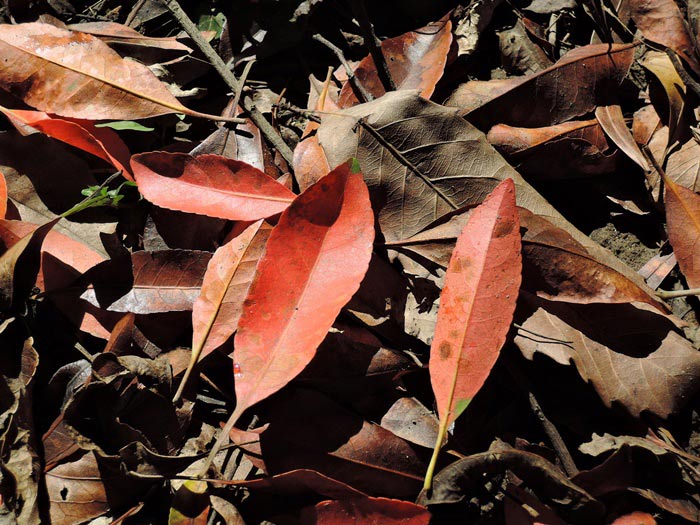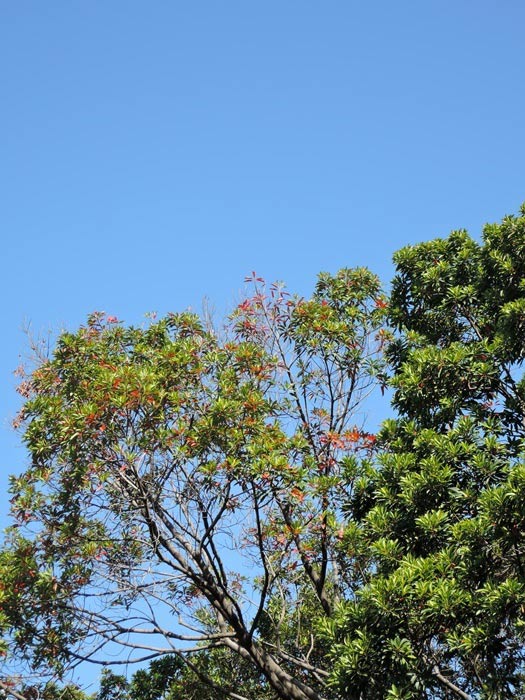Elaeocarpus sylvestris
The common elaeocarpus is a native subtropical evergreen tree in Taiwan, widely distributed throughout the island at low to medium altitudes.
The crown of the common elaeocarpus is cylindrical in shape, with dense branches and leaves, providing excellent shade. The alternate leaves appear purplish-red when new leaves first emerge, gradually turning emerald green over time. Before falling, the older leaves turn a vibrant crimson red, creating a striking contrast of red and green. This rich color variation throughout the seasons makes the tree a popular choice for parks, green spaces, and roadside plantings. Its beautiful shape and different appearances throughout the seasons make it a popular native tree species, so it is widely used as an ornamental tree and street tree.
In addition, the wood of the common elaeocarpus is hard and highly absorbent, and was traditionally harvested by farmers as logs for mushroom cultivation. The bark is rich in tannins and can be used as a dye. The oval-shaped fruits resemble olives in appearance, turning purplish-black when ripe. Though their flavor is tart and astringent, they are edible and serve as a favored food source for birds. What's more, the seeds of the common elaeocarpus are rich in oil and can be used as raw materials for soap and lubricating oil. In terms of medicinal use, the roots have the effect of dispersing blood stasis and reducing swelling, and can be applied to the treatment of contusions and injuries.
The distribution of the common elaeocarpus includes Taiwan, the Mainland Southeast Asia, southern China, Honshu, Kyushu, and Shikoku in Japan, and the Korean Peninsula.

